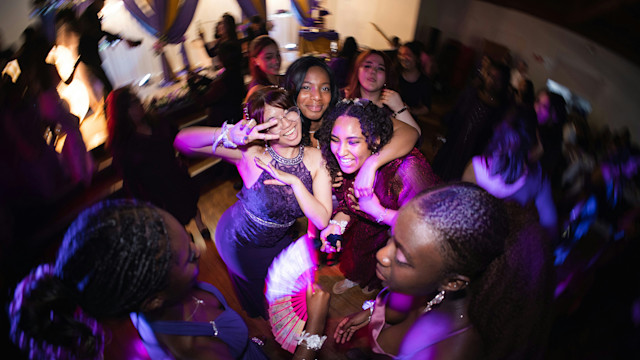How to Make House Music - Pro Tips for Beginners
July 10, 2024 - Want to craft infectious house beats? Learn everything there is to know about House music first. This guide spills the pro tips for beginners.

House music is a type of EDM (electronic dance music) that has a forward-moving momentum, and was originally an off-branch of Disco. It’s best known for its danceable feeling and soulful vibes.
Basic Elements of House Music
Hold your horses now! Before you get started making your own house music, let’s do a quick analysis of the elements of the genre.
House music often features the following aspects:
A repetitive underlying rhythm
A 4/4 time signature
An Average/moderate tempo (115-130 BMP)
Drum machines
Low basslines provide contrast to the percussion
Synths
Like many other popular genres, house music tends to be at a moderate tempo and in 4/4 time. As far as instrumentation goes, house usually drum machines and synths and sometimes includes disco samples or live vocals.
Origins of House Music
House music has roots from 1970-1980’s disco music, and the seed of it first began in Chicago, Illinois.
One of the first producers to popularize and propel House was Frankie Knuckles- Aka the “Godfather of House”. Knuckles is often credited with being the creator of Chicago house (Chicago LGBT Hall of Fame).
Where We Get the Genre Name
House music gets its name from the term “warehouse music” because of the music that was played in warehouses. Eventually, the name got shortened to just ‘house music’ and we all sort of forgot where it came from and what it meant.
How to Start Laying Down the House Track
Now that you know a bit of the background, you’re ready to begin your track.
1. Starting with Drums
Start with a single house element, and then let it branch out like roots spread into the ground. For me, I usually prefer to start electronic dance music with rhythm. It’s hard to go wrong with a 4-on-the-floor type rhythm at 120-135 BMP.
Once you have something rolling, it’s easier to get ideas. Putting ideas down (and getting rid of the blank slate) is the hardest part. Once that’s done, you’re already halfway to a bop. For house music, here are some tips to get the rhythm rolling:
Create a moderate 4-on-the-floor beat
Putting trippy hi-hats on the off-beats
Adding bright claps or snap sounds
2. Make the Bassline Play Off the Beat
Ultimately, the way the bassline interacts with the drums is the most important underlying facet. I like to write percussive parts separately from my bassline. I’ll do a drum outline first, then workshop several baseline ideas. Then, I pick the one that sounds most seamless and interesting.
Here are some things you can try in the bass synth:
Place the bass notes in between the kick drum (for a forward-moving impetus)
Write a chord progression and have the bassline follow the roots
Don’t be surprised if, when you’re first starting to make house music, you find that your bass and drums sound muddy. We’ll touch a bit more on this later…but know that placing the bassline between the drums (rather than having both elements hit at the same time) can help you avoid an ambiguous D&B combination.
3. Consider Chord Progressions
Another way to formulate your bassline is around a simple chord progression. Starting with a basic I IV V prog (or if you’re in C major, C F G) is the most popular house music/chordal setup.
You could also borrow a ‘pop’ chord progression like I V IV V (In C Major: C G F G). If you want to add in a darker sound, use the minor ii of the scale somewhere in the mix (D minor if we’re in the key of C).
4. Double Check the Sonic Foundation
Once the drums and bass are composed and solidified, you can add synths/melodies/samples on top in any order. I like to think of writing house music like the layers of a cake, and the foundation is the most important. If you have a weak bottom layer, everything sitting on top may crumble, or feel like a “sonic leaning tower of Giza”.

Part 2: Adding the Sonic Icing
Everything after the beat and drums is the icing. Here are some ideas for getting your house music to sound extra sweet.
Add Melodies, but Keep Your Ideas Simple
Think of the bassline as the main melody
Add simple melodic themes that contrast the bass in a higher range
Add ornamentation and rhythmic variation
In house music, the bassline often feels like the main course of the meal. It’s music easier to keep the melody that sits on top of it simpler, that way all of the elements play well together. You can actually think of the higher synths as being countermelodies to the bassline, which usually feels like the “main melody” already.
You could even double the bassline as the melody, but change the rhythm and have some faster, ornamental notes. If the bassline is all quarter notes, make the melody have some eight-notes, sixteenth notes, or triplets peppered in. You can make it all about texture without having to reinvent the wheel.
Mix it Up with These Types of Samples
Disco chops
Jazz
Funk
Soul
Borrow from other kinds of EDM
Since the house came from disco, why not add some 70’s/80’s samples and chops into your track to make it stand out? If you play the sax, that’s a great instrument to blend into this genre (If Pacific State could do it, so can you!)
In a similar spirit, house music also can contain samples of jazz, funk, or even soul music. You can borrow ideas from synth-pop since it was also influenced by the same parent genre (disco).
However, be warned that the further away you get from the house genre, the more difficult transitions may be to pull off.
Making House Music in Soundtrap
Soundtrap has loads of royalty-free loops and beats within the house genre. There is a group of chilled house samples, and also many loops under EDM that you can use in your project. Here are some of my favorite samples relevant to this genre:
For Acid vibes try: TB303+ Fake News
For a nice thin house clap try: Kandy-Feature
Kick and clap: Halcyon drum loops
Soundtrap is a completely cloud-based DAW that you can start making house music with for free. However, I prefer to use the paid version, because it allows you to have a plethora of effects and mixing and mastering tools (for about $10 a month).
For house music, Soundtrap’s instant sidechain compression is immensely helpful for creating a pro-sounding bass and drum line. There are also the vocal clarity and vocal doubler features, which works great on adding that extra ‘umph’ to any live vox you may have added in.

House Music Examples
Listening to the types of genres you want to make is a good way to get the creative juices flowing, and have the right vibe come to you when you’re working in your DAW. Here are some examples of songs from the genre:
Subgenres of House (and Quick Tips on How to Make Them)
As house music spread, different subgenres started to show up. Here are some prominent ones, and ideas on how to make music that sounds similar to them.
Progressive House
Example: “Leave the World Behind” by Axwell
One of the most popular subgenres of house is, progressive house artists like AVICII, Swedish House Mafia, Sasha, and Axwell create a distinctive vibe. This subgenre was made popular in the 1990s and is still very present today…
But how is prog. house different from regular house music?
If you want to make your track progressive house, consider adding catchy, long-form melodies, vocals, and more of a spacious trancey type sound.
Acid House
Example: “Slam” by Phuture
Acid house, like regular house, also comes from Chicago. This genre has a “Seething, Burbeling Sound”. Think: Sections of Daft Punk’s Homework (Britannica). However, others argue that acid house was inspired by the substance, MDMA, rather than the overflowing bubbling sound. Perhaps they go hand in hand.
To make your track feel a bit more like acid house, try getting that iconic Roland 303-type sound.
Tech House
Example: “Losing It” by Fischer
To get tech house, elements of both techno and house are combined. This EDM subgenre also has some elements of the progressive house style.
If you want to try out tech house, start with some minimalistic techno, and add in house vibes.
Think: less cavernous drums, more curt techno sounds, and distorted oscillators…and pair that with the ideas of the house we talked about earlier.
Deep House/Tropical House
Example: “Firestone” by Kygo
Deep house tends to be much more mellow than a straight-up/ Chicago house. It’s also considerably slower than most types of house- with the BMP even being as slow as 100.
Tropical house is a subgenre of deep house. If you want to make it feel more like a tropical house, consider adding gentle vocals, and acoustic samples of keys. Go for a relaxed but uplifting feeling- like you’re lounging at a beach somewhere.
There are loads of different types of house subgenres to delve into… Lo-fi house, electro house, French house, and more. Broaden your listening horizons, see what strikes your fancy, and go from there.
Mixing House Music & Finishing the Track
Ensure all elements are clear
Go back and make sure the arrangement isn’t crowded
Crisp up the lows by tweaking the sound wave or upping the kick
Integrate sidechain compression into the D&B
Make sure the essential house elements are sitting well in your mix: Namely, look for presence in the big three: bassline, drums, and melody.
Aside from mixing, compression, and thinking about where the instrument is located in the field of sound, be sure that nothing is in a range that clashes inside of the music arrangement itself. If too many synths are occupying the same range/octave, things may get lost or sound fuzzy.
If your drums and bass are still sounding ambiguous towards the end of composing your house song, try changing the waveform of your bassline to something more pointy. Sawtooth waves are very cutting and oboe-ish, and switching from a more mellow bass to something like this can be a quick fix. Another way to add that finishing touch is to have sidechain compression get triggered by the bass drum so that it affects the bass line.
Lastly, don’t be afraid to make the kick drum a bit louder than you think it should be. This is the instrument that can bring everything in your house track together.
Making House Music: Conclusion
As you continue to hone your craft, be sure to remember to follow compositional guidelines, like creating a hook at the beginning of a song, looking at song form, and laying out your measures, Automating any changes to dynamics and effects ensures the end result is smooth and professional.
While there are some general guidelines you should follow to get that iconic house sound, be sure to also make it your own. Experiment with sounds, and most importantly, cook up something fun!
Start making house music for free with Soundtrap: click this link!
About the author
Aleah Fitzwater is a multi-instrumentalist, songwriter, music journalist, and blogger from Temperance, United States. Aleah holds a Pk-12 instrumental music education degree. Her main instruments are flute, piano, drums, bass, and guitar.
Beginnen Sie noch heute mit Soundtrap!